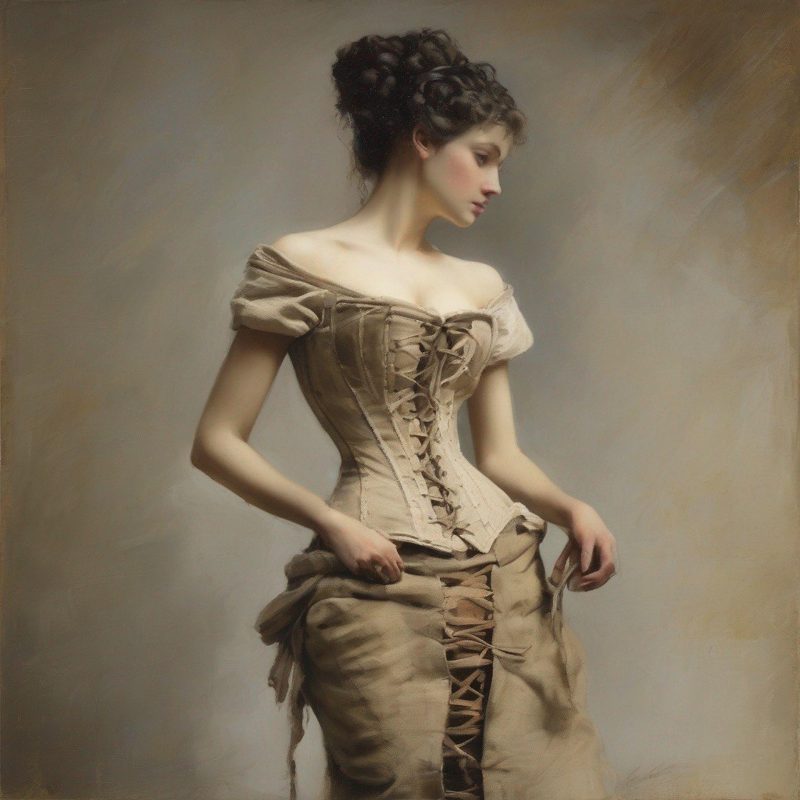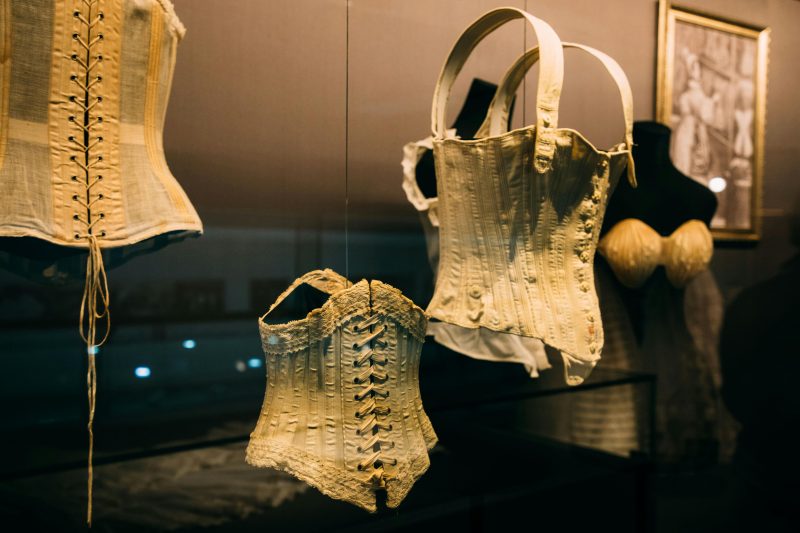The corset is one of the most iconic garments in fashion history, but its role in the Regency era was quite different from its later Victorian counterpart. During the Regency period, corsets were designed to create a natural, flowing silhouette rather than the exaggerated hourglass shape of the mid-19th century. However, they were still controversial, with critics arguing that they were harmful to women’s health.
The Regency Corset: A Softer Silhouette

Regency corsets, often called ‘stays,’ were shorter and less rigid than those of the Victorian era. They were designed to support the bust and create a high-waisted, column-like shape that complemented the empire-line dresses of the time. Made from linen or cotton and reinforced with whalebone or reed, these corsets were relatively comfortable compared to their successors.
The emphasis was on a natural, graceful figure rather than extreme waist reduction. This reflected the neoclassical ideals of the era, which celebrated simplicity and elegance over ostentation.
The Health Debate
Despite their relative comfort, Regency corsets were not without controversy. Critics argued that even the lighter stays could restrict breathing and movement, leading to health problems. Some physicians claimed that tight lacing could cause digestive issues, fainting, and even damage to internal organs.
However, the debate was often exaggerated. While some women undoubtedly laced their corsets too tightly, most Regency stays were designed to provide support without causing harm. The real health risks associated with corsets became more pronounced in the Victorian era, when fashion demanded increasingly restrictive garments.
The Social Implications
The corset was more than just a piece of clothing; it was a symbol of femininity and social status. Wearing a corset was seen as a mark of respectability, as it helped maintain the proper posture and silhouette expected of a lady. For working-class women, who often could not afford corsets or needed greater freedom of movement, the lack of a corset was a visible sign of their lower status.
The Legacy of the Corset

The Regency corset laid the groundwork for the more extreme styles of the Victorian era, but it also represented a shift in attitudes toward women’s fashion. Its emphasis on natural beauty and comfort was a departure from the rigid, heavily structured garments of the 18th century.
Today, the corset remains a powerful symbol of fashion history, evoking both admiration for its craftsmanship and criticism for its impact on women’s bodies. The Regency corset, in particular, serves as a reminder of the era’s unique blend of elegance and practicality.
Conclusion
The Regency corset reflects the changing ideals of beauty and femininity in the early 19th century. While it was less restrictive than its Victorian counterpart, it was still a source of controversy and debate. The corset’s legacy endures as a testament to the complex relationship between fashion, health, and societal expectations.
References for Further Reading:
- The Corset: Fashioning the Body
https://artsandculture.google.com/story/the-corset-fashioning-the-body-the-museum-at-fit/6AXRW2u2jYt1Kw?hl=en - The Dangers of Tight Lacing: The Effects of the Corset
https://www.rcseng.ac.uk/library-and-publications/library/blog/effects-of-the-corset/

Leave a Reply